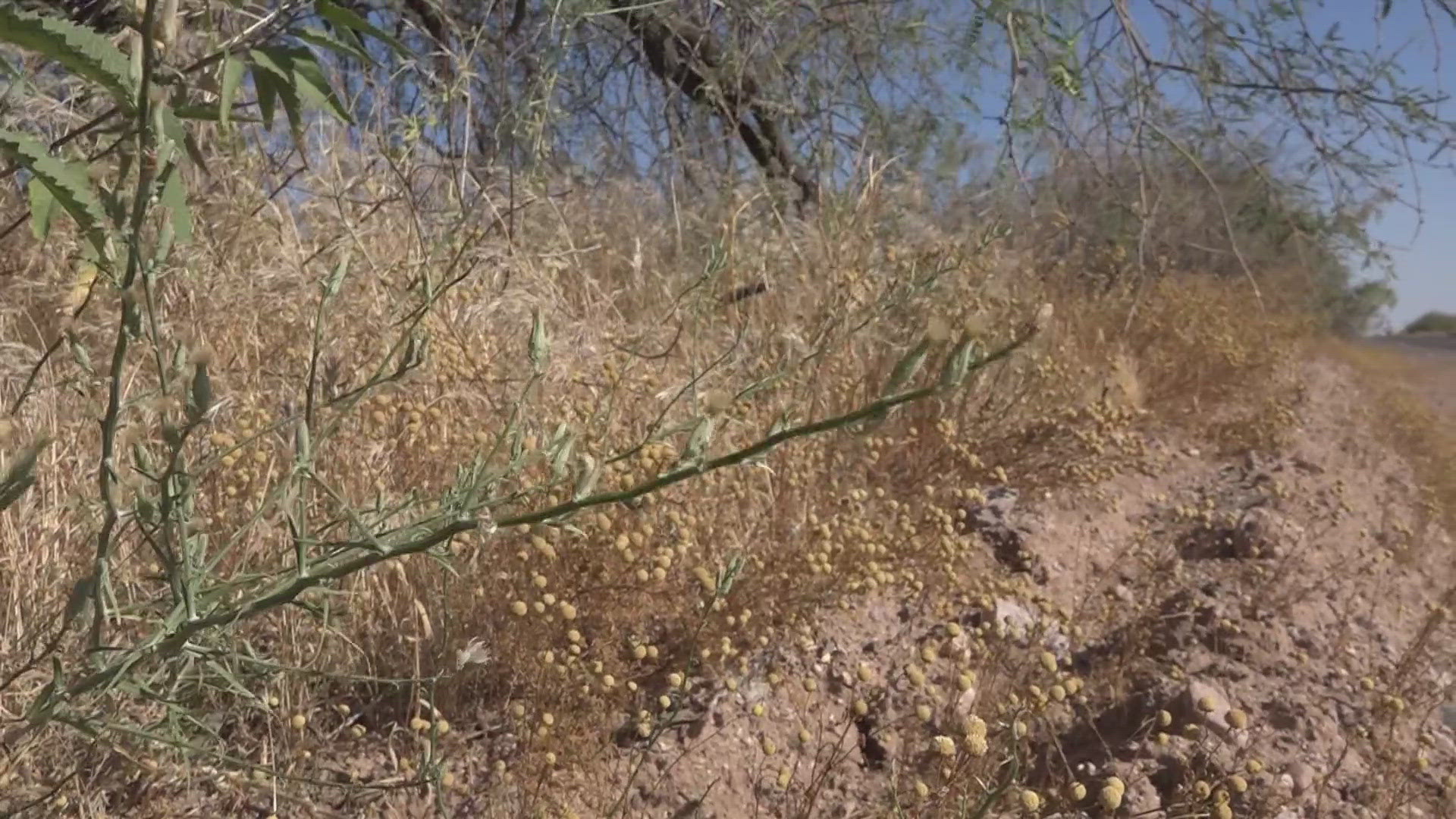PHOENIX — The Sonoran Desert hasn't always burned the way it has in the last few years, leading researchers to wonder why fires are becoming bigger and burning for longer.
A new report shows the desert is slowly changing into grasslands with invasive species filling in patchy areas and adding more fuel on the ground for fires.
"There used to be patchiness to the desert," Alan Sinclair, a retired type 1 incident commander and wildland firefighter, said. "What we're seeing with the invasive (species), they're filling in those naturally occurring patchy areas, creating a blanket of fuel that allows fire to move across the desert."
Sinclair said he can pinpoint some of the fires in which he saw a difference due to the invasive species.
"Certainly the Bush Fire, right? And you can see Four Peaks from here, that fire ate up a lot of desert, and the Telegraph Fire did as well," Sinclair said.
The Bush Fire burned more than 190,000 acres in 2020. The Telegraph Fire burned 180,000 acres in 2021.
"When those fires happened in summer of 2020, I took a pause and realized that there are a lot of questions that we as a scientific community don't really have answers to," Ben Wilder, director of Next Generation Sonoran Desert Researchers, said.
A new report published by the Southwest Fire Science Consortium is answering some of those questions.
"Before the invasive species, there were fires in the desert. They were just not very big, or it could have been decades between fires, and didn't really make much of an impact," Molly McCormick, program manager for the Southwest Fire Science Consortium, said. "But now, with the invasive species, they are carrying fires or making fires hotter, more dangerous, faster moving."
The concern for researchers now is public safety, especially in areas in the Wildland Urban Interface, communities that backup to desert or forest lands.
"We could see a fire started in the wildlands and come into a community pretty quickly," McCormick said.
Researchers said it's important to take action with this information, like creating areas for fire breaks.
"This gives a firefighter a place to make a stand, and it keeps the fire behavior down," Sinclair said.
Sinclair is among those testing new ways to prevent fires from spreading, like leaving native plants alone and weed-eating and burning invasive ones.
"My strategy is to acknowledge the problem when it exists, remove the fine fuels and leave the native vegetation intact," Sinclair said.
Questions remain about growing fires but officials are looking to learn more how to reduce risk, preserve areas that need to be conserved and what restoration in burned areas can look like.
"I think there's hope in that, like, collectively, we can come together and figure out ways to navigate this really difficult challenge," McCormick said.
Up to Speed
Catch up on the latest news and stories on the 12News YouTube channel. Subscribe today.

